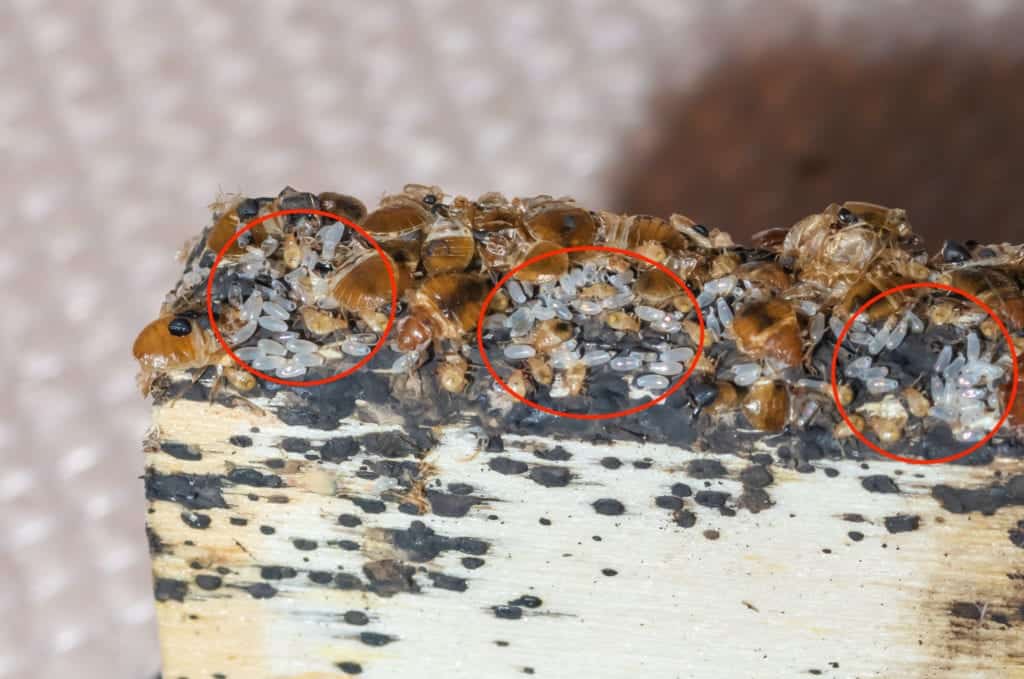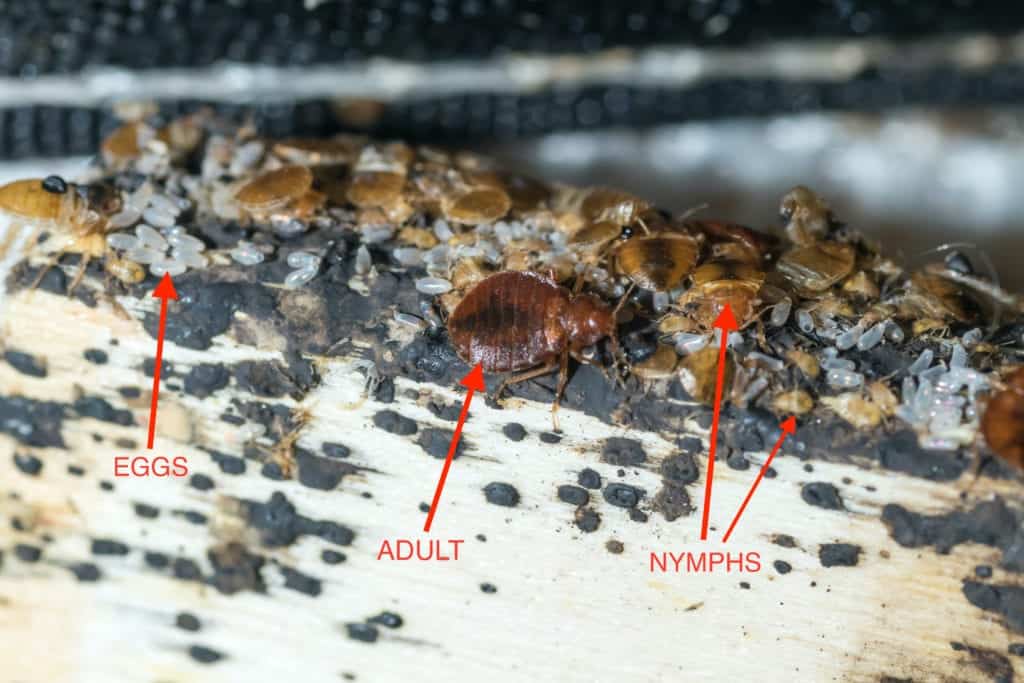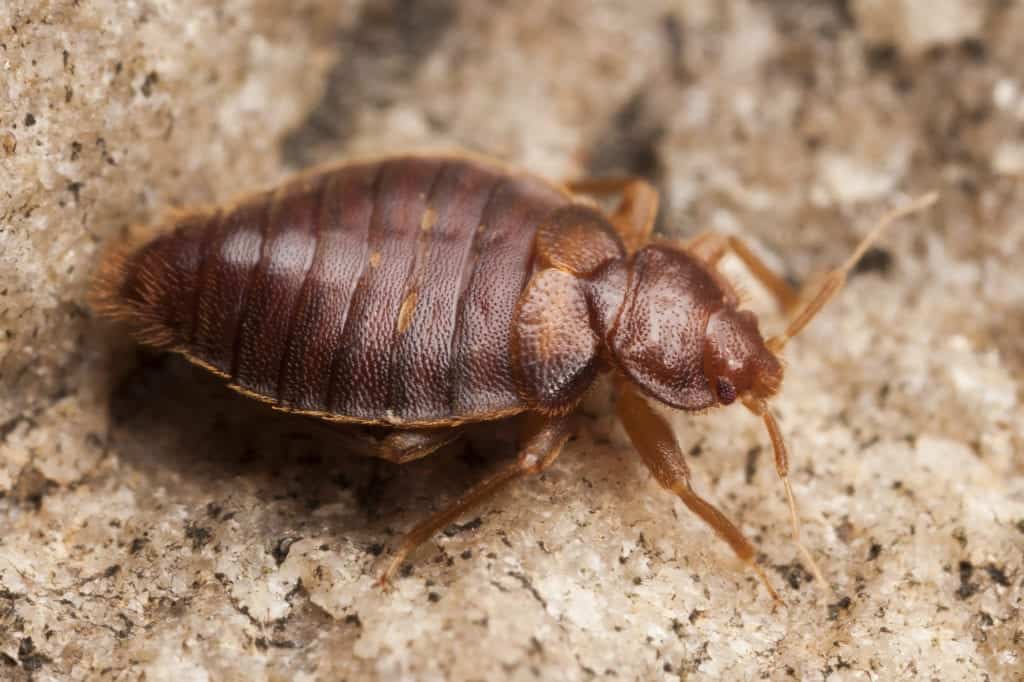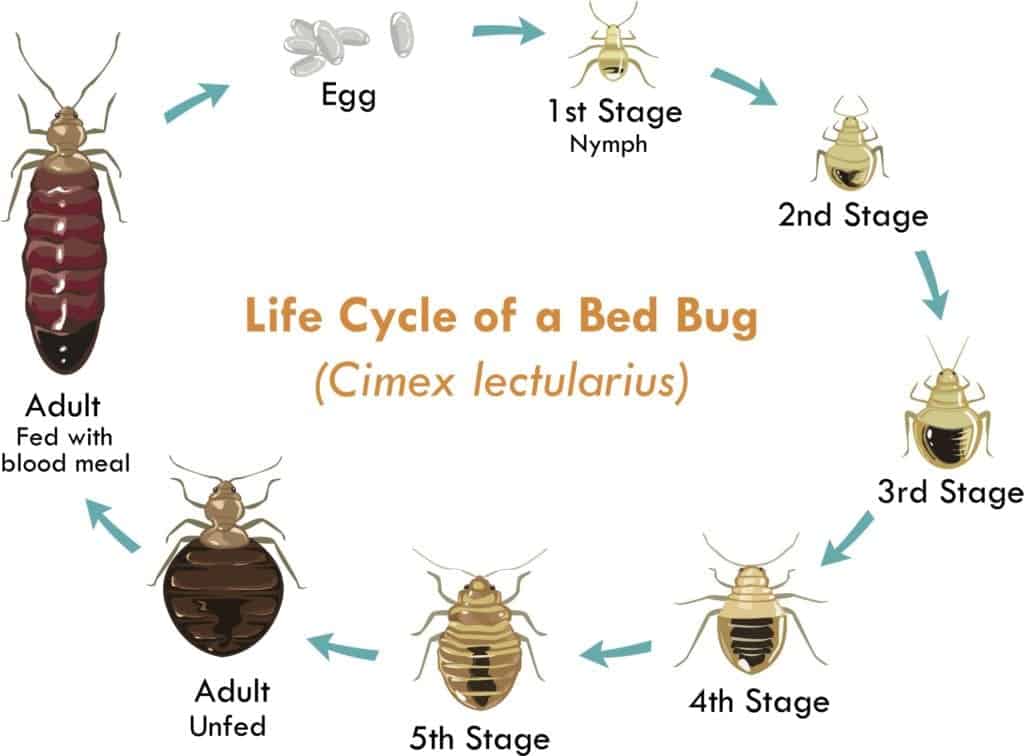The Life Cycles of Bed Bugs
The Life Cycles of Bed Bugs
Stage 1: Eggs
As is the case with many insects, reptiles, birds, and even mammals, bed bugs begin their lives as simple eggs. The amount of meals a female bedbug has access to directly effects the number of eggs she is able to lay. From a single blood meal, females can lay between 5 – 20 eggs total, and between 1 – 7 in a single day. After roughly 10 days, the female will need to feed again in order to continue producing eggs. The females are rarely picky about the location of their egg laying, sometimes laying them in groups and sometimes laying single eggs anywhere she wanders. When undisturbed, the eggs typically have a survival rate of 97% and will hatch between 4 – 12 days (6 – 9 on average) depending on the temperature of the atmosphere. In completely optimal conditions, females can produce enough eggs to double their population every 16 days and can up to 200 eggs in a lifetime. This is why bed bug problems can quickly get WAY out of hand. 
Stage 2: Nymphs
Once hatched, baby bed bugs are referred to as nymphs. They are smaller than adults and appear yellow and waxy. The nymphs go through 5 different stages known as instars and each instar ends when the arachnid molts, growing larger. Each instar requires a warm-blooded meal from a host in order to molt and will typically make the change within 5 days following the meal. Similar to their hatching times as an egg, nymph’s development is dependent on temperature and other favorable ambient conditions. On average however, the total development from freshly hatched nymph, through their 5 instars, and into adulthood takes roughly 37 days. While the survival rate of eggs stands at 97%, the likelihood of nymphs surviving into adulthood is less, with only about 80 percent surviving to be able to reproduce. 
Stage 3: Adults
Adult bed bugs are reddish-brown in color with flat, oval-shaped bodies. They measure about 3/16 inches in length and are flat similar to an apple seed. After a sanguine meal, they are swollen and red, more rotund. On average, adults live between 6-12 months, although in optimal conditions some can live longer. They are also capable of surviving very long time periods without indulging in any blood meals, making them very difficult to starve out. 
Why Heat?
To treat your home for bed bugs with a traditional chemical treatment requires a minimum of 2-3 visits to target the bugs as they mature. This is because chemical treatments are not effective on bedbug eggs. So, while it may appear as though the problem has disappeared once the adults stop biting, it’s only a matter of time before the eggs begin to hatch and the nymphs start searching for their blood meals. Then, it’s difficult to retreat in time as the eggs will hatch at different times and continuously spraying chemicals in your home, especially in your bed, is not at all ideal. That is why heat is our weapon of choice to combat beg bugs! Intense heat will kill both adult bed bugs and their eggs. This treatment is also ecofriendly and safe, which is why it has quickly become the leading defense against bed bugs today. The infected area must be heated to at least 115°F (46°C). Once the area has reached this heightened temperature, it must be maintained for roughly 10 minutes, which is ample time for the little creepy crawlers to expire from exposure to the heat. 
Citations
Bed Bugs (2017) The Centers for Disease Control and Prevention. U.S. Department of Health and Human Services. Available at: https://www.cdc.gov/dpdx/bedbugs/index.html (Accessed: August 2020). Gannon, M. (2017) Bedbugs: Facts, Bites and Infestation, LiveScience. Available at: https://www.livescience.com/42297-bed-bugs-facts-information.html (Accessed: August 2020). Miller, D. M. and Polanco, A. (no date) Bed Bug Biology and Behavior, The Department of Entomology at Virginia Tech. Virginia Department of Agriculture and Consumer Services. Available at: http://www.vdacs.virginia.gov/pdf/bb-biology1.pdf (Accessed: August 2020).
Request a Free Quote Today
(We do not share your data with anybody, and only use it for its intended purpose)


